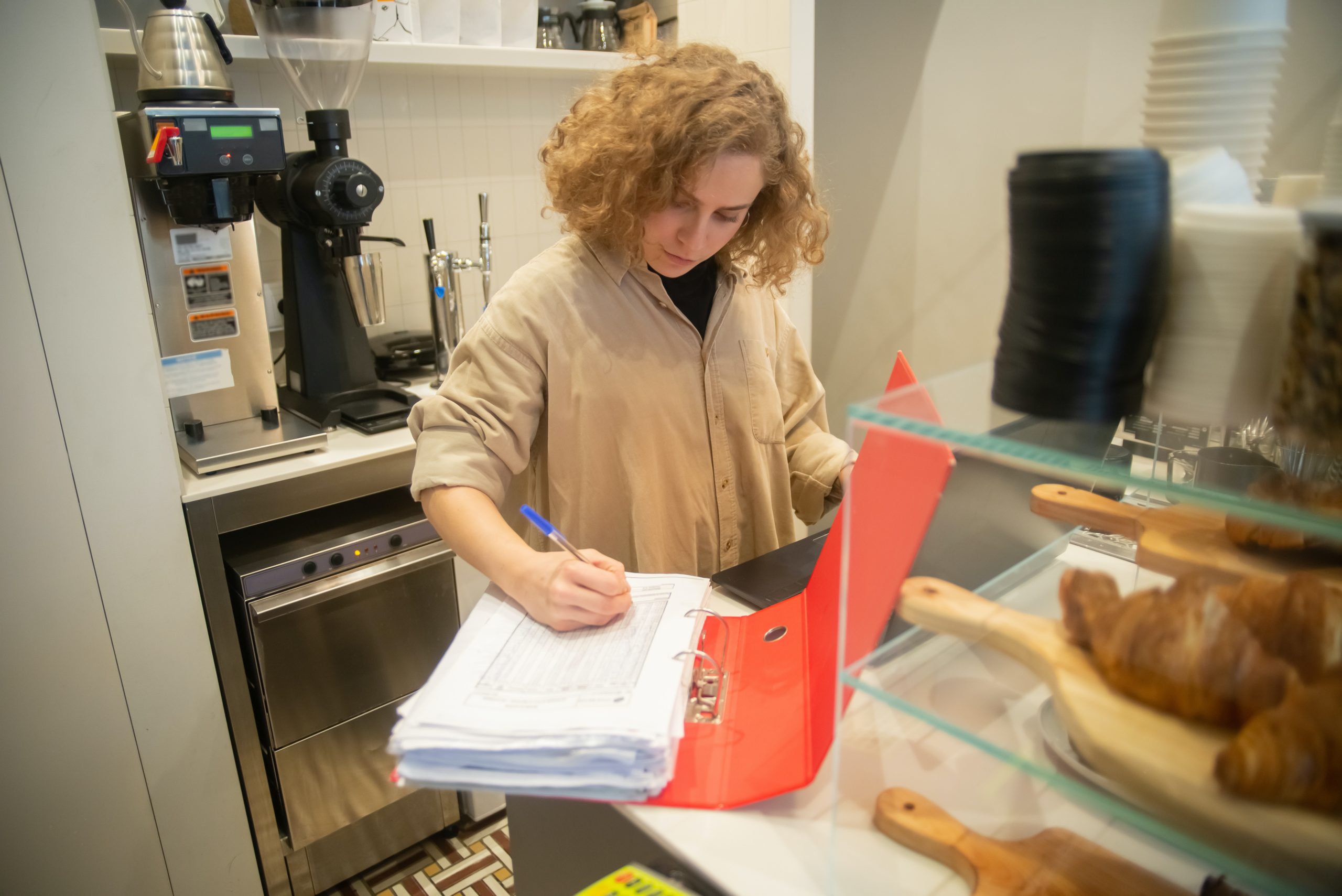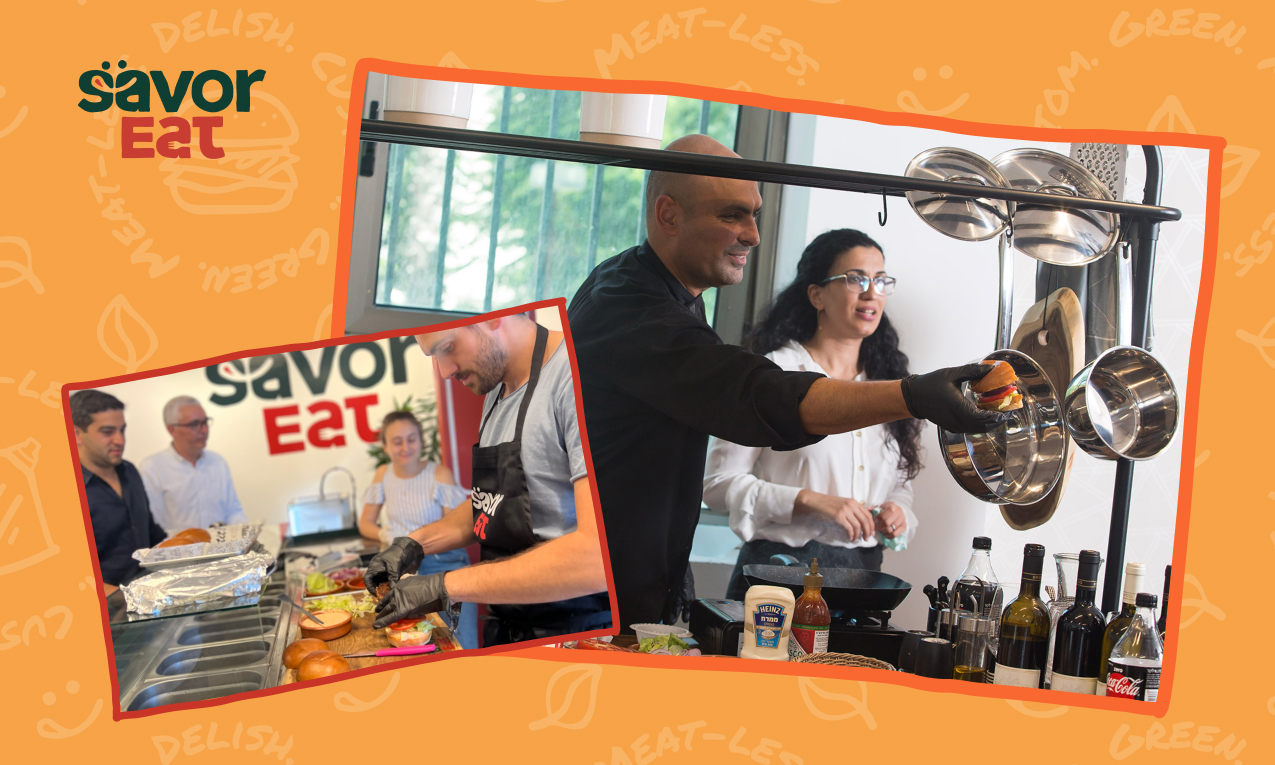Restaurant operations management is one of the core processes involved in running a restaurant or food service business.
Identifying pain points, ensuring efficient operations, and planning strategies to maximize revenue make restaurant operations management a lot of work. But you will be rewarded handsomely once you maximize your resources in the form of loyal, satisfied customers and soaring profits.
This guide covers all you need to know about restaurant operations management and how to improve efficiency to take your enterprise to the next level.

Restaurant Operations and Management
Restaurant operations include all activities and processes to keep a restaurant running smoothly. They are categorized based on the following:
Purchasing/Procurement
A restaurant’s operation cycle begins with purchasing/procurement of inventory items. Purchasing is a regular, rolling task that is accomplished throughout the restaurant’s life, as ingredients, equipment, and even decor are procured regularly for smooth operations.
Other than maintaining healthy inventory levels, purchasing also involves identifying minimum order quantities, planning delivery, creating reordering schedules, storage planning, and inventory tracking.
Purchasing tasks often involve the restaurant’s operation manager or a purchasing specialist.
Pricing
Determining the best pricing strategy for the restaurants’ menu items is a crucial element of operations.
It also involves the following tasks:
- Understanding the accounting costs involved in overall restaurant operations
- Keeping up with fluctuations in food prices due to seasonality, supply shortages, etc.
- Learning about competitors’ pricing strategies
- Studying consumer demand
- Optimizing ordering and reordering quantities
- Scheduling order placement
- Calculating and optimizing profit margins
- Recalibrating pricing strategies to maximize profits over time
Determining the pricing of menu items is typically the responsibility of the restaurant owner and their accountant. Some tasks may fall to the restaurant’s operation manager.
Food Preparation and Cooking
This comprises all the processes involved in the preparation of the menu items offered by a restaurant:
- Creating a preparation hierarchy or system for task division
- Preparing menu plans
- Creating standardized recipes and recipe cards
- Developing a time-based preparation strategy
- Monitoring food quality and inventory
- Ensuring timely meal service
- Cooking the meals
- Devising strategies to accommodate customers with dietary restrictions or allergies
- And more.
The kitchen staff carries out all the food preparation tasks daily.
These tasks are some of the most critical elements of the restaurant’s operation and have a great scope for streamlining and improvement.

Front-Of-House Services
This part of a restaurant’s operation covers a wide range of tasks. It is the restaurant’s operation manager’s responsibility to plan and oversee the implementation of service activities.
The primary purpose of front-of-house operations is to provide customers with a comfortable atmosphere and friendly service. Improving these guest-centric activities will increase customer satisfaction and boost the restaurant’s reputation.
Service tasks typically include:
- Greeting customers
- Answering calls and scheduling reservations
- Checking guest reservations
- Interacting with customers
- Leading guests to their seats/arranging seating capacities
- Taking orders
- Serving customers
- Bartending
- Describing menu items or the restaurants’ specials
- Answering queries and offering resolutions
- And more.
Service tasks are a highly demanding element of operations that can directly impact customer satisfaction and, thereby, operational efficiency.
Cleanup Procedures
Cleanup procedures can include a broad range of activities, such as ensuring the kitchen adheres to industry and local rules and regulations and keeping the serving area clean and inviting.
Cleanup procedures also involve:
- Developing a standardized cleanup procedure
- Assigning cleanup duties and responsibilities
- Monitoring cleanup processes
- Maintaining a clean and hygienic environment in the kitchen, inventory, etc.
- Creating a cleanup timeline and schedule for different cleanup tasks
- Planning waste disposal schedule and procedure
- Plan periodic deep cleaning
- And more.
What Is Restaurant Operations Management?
Restaurant operations management is a broad term that classifies the efforts undertaken to improve a restaurant’s operational efficiency.
These cover any area of operation so long as they work on increasing the quality of food and service offered, streamlining processes, and generating profits.
What Are the 3 Roles of Restaurant Operations Management?
Restaurant operations management can be carried out by a dedicated team or the existing employees of the restaurant. It largely depends on the restaurant’s operating style.
Three of the most critical roles encompass the following:
Planning
From maintaining inventory order scheduling to standardizing front-of-house service practices, the management team has a hand in all planning-related aspects of restaurant operations.
Implementation
They also ensure the timely implementation of all the planned procedures and participate in any last-minute decision-making.
Supervising
Operations management oversees the restaurants’ operations and develops strategies to address any pain points and gaps.
Often, efforts to improve restaurant operations focus on addressing the biggest challenges that the enterprise faces each day. These challenges are a common issue for most restaurants all over the world.
Four Main Challenges in Restaurant Operations
Running a business is rife with challenges, and the food industry is full of them. Here are the top four challenges in restaurant operations management at present:
-
Labor Shortages
Restaurants are finding it difficult to source labor to maintain efficient operations. This creates a loss of opportunity despite consumer demand remaining high. In the leisure and hospitality industry, there are hundreds of thousands of unfilled job openings—adding up to about 40% as of July 2022.
When short-staffed, restaurants become very inefficient at handling all elements of their operations and delivering top-notch service to their customers. It also puts undue pressure on current staff, who must take on more tasks. This leads to higher employee churn rates, thus exacerbating the problem.

-
Rising Costs and Shrinking Profit Margins
Increasing costs of acquiring ingredients, labor, equipment, etc., are a major issue for restaurants. On top of all this, the fluctuating market introduces the challenge of constantly recalculating menu costing and adjusting yield.
Combined with diminishing profit margins, these rising expenses make running a successful restaurant business incredibly challenging. Restaurants may push some of these added costs onto their customers, but not all of them, meaning they must bear most of the losses.
Reversing diminishing profits and lowering operational costs are two of the most urgent problems that must be addressed.
-
Inventory Management
Managing a restaurant’s inventory is one crucial task that many managers struggle with. The problems preventing efficient inventory management are plenty:
- Figuring out the optimum ordering quantity
- Finding vendors that offer reasonable prices
- Tracking stock movement
- Maintaining optimum storage conditions
- Keeping up with changing customer demand
- Compensating for supply shortages
- And more.
Streamlining inventory management can significantly reduce operational costs, so you must make it as efficient as possible.
-
Labor: Hiring, Training, and Retaining
Despite technological advancements like robotic servers and cooking arms, skilled labor is an indispensable element of the restaurant industry that will not go away anytime soon.
But with high labor turnover rates, there is always a need to hire more staff, which also means investing a lot of time and money in training them. Repeating this process multiple times a year is a massive drain on the restaurant’s resources.
While there are many more challenges in restaurant operations, these top the list in terms of urgency. Fortunately, there are ways to mitigate these problems and improve your restaurant operations management.
Ways to Improve Restaurant Operations Management
Once you have a deep understanding of the troubles plaguing your restaurant’s operation, it becomes easy to find ways to improve operational efficiency in all problem areas.
It will take a lot of time, work, and likely many changes to your processes, but the effort will be worth it.
Here are some examples of popular solutions for improving restaurants’ operations for your inspiration.
Food Inventory Management
A restaurant’s inventory ties up a huge portion of its cash flow. The biggest issue is that a large percentage of it is perishables that must be used up by a certain date.
Ingredient inventory is precarious, and even minor problems in terms of overstocking, produce shortages, and damaged/contaminated produce can lead to huge losses for your business. Poor inventory management is a massive vulnerability for any restaurant.
Fortunately, widely available technology offers a simple solution for controlling and optimizing inventory: a fully integrated inventory management system.
This makes it easy to track and monitor inventory levels for everything you keep in stock. You can integrate it with your point-of-sale system to further streamline all operations.
It can further use data analytics to determine minimum order quantities and best ordering schedules to offset shortages.

Food Cost Reduction
Some innovative methods of reducing overall food costs are:
- Tracking food waste
- Standardizing recipe measurements and portion sizing
- Monitoring inventory levels
- Proper staff training
- Tracking internal management issues, such as breakage or shrinkage
- Monitoring vendor contract pricing
- Tracking vendor contract violations
Restaurant management software can take the load off your shoulders by doing most of the tracking, monitoring, and analysis. Automating as many tasks as possible will streamline your operations and minimize human error.
Labor Cost Reduction
Labor expenses take up a large percentage of a restaurant’s overall budget. This means it must be optimized to make the most of your resources.
One way to do this is through efficient labor allocation and forecasting. This means you must determine when, what kind, and how many employees you need to meet customer demand over a certain period.
And the most effective way to forecast labor demand is through sales forecasting. You can use historical sales data and trend analysis to predict sales levels for your restaurant. This way, you can set employee schedules for optimum performance
Sales forecasting software is the best tool for the job. It can integrate with other technologies such as:
- POS systems
- Accounting tools
- Scheduling tools
- And more.
After collecting and analyzing the data from these systems, the tool can help you make more informed decisions to optimize labor allocation.
Hiring and Onboarding Process Standardization
With labor shortages and high employee turnover rates, restaurant operations management may have to recalibrate their hiring and onboarding processes.
Thanks to HR and payroll software, you can streamline hiring, onboarding, scheduling, and paying employees all in one go.
Data and Analytics Optimization
In general, restaurants have small profit margins, and significantly increasing revenue is often a pipe dream. And with so many operational elements demanding more investment, deciding what to spend money on can be challenging.
However, real-time data and analytical solutions like reporting software make it possible to crack the code and take profits to the next level. You can leverage robust software solutions to track daily operations and financial performance.
The best software will go one step further and provide actionable insight for data-centric decision-making.
Streamlining the Menu
Running a restaurant business and making a profit has become increasingly difficult due to issues like food waste, supply chain issues, rising ingredient costs, and more.
A simple solution that can help mitigate these problems is streamlining your menu to optimize your capital, labor, and storage.
Study your target market and strategically downsize your offerings to offer fewer but high-quality dishes and services to your customers.
Adoption of Technological Solutions
If you’re not adopting technological solutions to upgrade your operational efficiency, you will end up losing your market share to competitors.
Automation provides a range of solutions that help simplify your restaurant’s operation. Some popular examples include:
- Online ordering solutions
- Robotic servers
- Mobile apps
- Social media marketing
- QR code menus
- And more.

Third-Party Integrations
Third-party integrations are a brilliant way to maximize data collection strategies while offering a seamless service. The larger the pool of data you have, the higher the accuracy of your predictions.
Some of the most useful third-party integrations for restaurants include:
- Delivery and takeout
- Email and other marketing applications
- Online ordering
- Staff scheduling
Equipment Maintenance
Your equipment for food prep, cooking, cleaning, and even billing make up the backbone of your daily operations. It is crucial to stay on top of equipment maintenance; without it, the risk of breakdowns is high.
If you don’t want to experience unexpected equipment malfunctions, you must keep track of maintenance and repairs. The best way to do so is by using robust restaurant management software. These systems keep track of your equipment maintenance scheduling and upcoming repairs.
You can keep all of your restaurant tools and equipment in tip-top shape with regular reminders for the required maintenance tasks.
Monitor Customer Response
Tracking customer feedback and providing timely responses is the best way to analyze how efficiently you run your operations. It can also help you understand ways to improve your restaurant operations management.
Customer response monitoring is easy through the following:
- Customer feedback surveys
- Social media interactions
- POS-linked loyalty programs
- And more.
Examples of Restaurant Operations Management Solutions
Restaurant365 – Restaurant Management Software
Restaurant365 is a cloud-based software provider with a wide range of operations management tools for restaurants. Their offerings include accounting, store operations, HR, payroll, and more solutions that help automate most of your restaurant’s operations.
SavorEat – End-to-End Restaurant Operations Management
SavorEat offers fast-moving kitchen solutions by incorporating chef robots, 3D food printing, machine learning, and more. These allow food service operators to better predict demand, optimize inventory ordering, reduce waste, and more, while automatically manufacturing food.
The SavorEat Robot Chef platform provides extra efficiency with meals made automatically. The end-to-end solution makes it easier to manage inventory/ingredients by learning from consumer ordering patterns.
Popmenu – Restaurant Operations Tools
Popmenu offers restaurants a wide range of tools to streamline operations. Marketing, menu optimization, online ordering, and delivery—their automation solutions make labor shortages easier to manage.
Toast, Inc. – Restaurant Point of Sale and Management Systems
Toast offers restaurant-first solutions that facilitate contactless ordering, marketing, payroll, scheduling, online ordering, and deliveries.
Onvi – Order and Pay Solutions
Onvi provides POS, ordering, and payment solutions to hospitality service providers. Restaurants can create customized online menus and facilitate online ordering, pickup, delivery, and payment services.
SevenFifty – Buyer and Distributor Marketplace
SevenFifty is an online marketplace that connects buyers and distributors on a single platform. Its features include:
- Portfolio listing
- Product management
- Online search and filtering tools
- Order creation and tracking
- Reordering
- And more.
Choco – Restaurant Management Software
Choco is a comprehensive management software that covers various restaurant operations. It allows restaurant managers to simplify the following:
- Inventory management
- Stocking and restocking process
- Waste reduction
- Vendor management and interaction
- And more.
Notch – Restaurant Supply Chain Management Solutions
Notch allows restaurants to manage all suppliers on one platform. Its umbrella of solutions also includes:
- Delivery verifications and supplier error alerts
- Inventory updates
- Accounting and invoice automation
- Payment scheduling
- And more.
Slice – Pizzeria Operations Management Solutions
Slice is an operations management solutions provider that works exclusively with pizzerias.
ezCater – Online Catering Marketplace for Enterprises
ezCater is an online catering marketplace that connects local caterers with corporate events and private party hosts.
The Takeaway
When you’re running a restaurant or food service operation, it can be easy to get overwhelmed. You have customers to serve, employees to manage, and money to count. Running an efficient operations team is key to success, but it can be difficult when there are so many different areas in which you need improvement. Fortunately, there are many ways that you can streamline your operations and improve your bottom line.
Operations management is not just limited to the restaurant industry. It is crucial for other sectors as well, with practical and technological solutions just as varied as the industries and their operations.
What is common across industries is the amount of effort that optimizing operations and their management involves. Time, capital, labor, strategy—a lot of work goes into it.
Once optimized, restaurant operations management can unlock a business’s full potential to deliver its best to its customers and keep its employees happy, all while earning the highest profit margins.
With so many advancements in food industry technology, integrating software and automation into your restaurant’s operations is easier than ever. Investing in these solutions is sure to take your enterprise to the next level.





